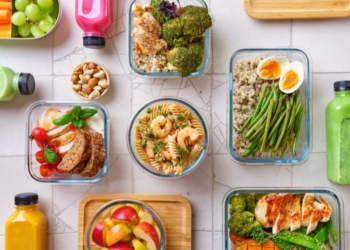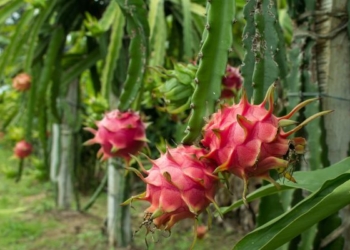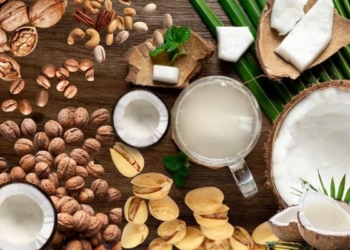When it comes to plant-based protein alternatives, bean curd, and tofu stand out as two popular options. These soy-based products have gained immense popularity among vegans, vegetarians, and health-conscious individuals. However, many people often use the terms “bean curd” and “tofu” interchangeably, assuming they are the same. In reality, there are notable differences between the two, including their origins, production methods, textures, and culinary applications.
In this article, we will delve into the world of bean curd and tofu, uncovering their unique characteristics and helping you understand which one suits your palate and nutritional needs.
Bean Curd Vs. Tofu

1. What is Bean Curd?
Bean curd, also known as “tofu skin” or “yuba,” is a traditional soy product that originated in China. It is made by boiling soy milk and skimming off the thin film that forms on the surface during the cooking process.
This film is then dried, resulting in delicate, translucent sheets of bean curd. Its texture is soft and slightly chewy, and it has a mild, nutty flavor.
2. What is Tofu?
Tofu, on the other hand, is a soy-based food product made by coagulating soy milk and pressing the resulting curds into solid blocks. It is believed to have been first produced in ancient China around 2000 years ago.
Tofu comes in various forms, including silken, soft, firm, and extra-firm, each with different textures and applications.
3. The Origins of Bean Curd and Tofu
Both bean curd and tofu have ancient origins dating back to ancient China. Buddhist monks discovered the process of making bean curd while seeking ways to avoid food waste.
Tofu, on the other hand, is attributed to Prince Liu An, who is said to have accidentally created the first tofu block when he curdled soy milk.

4. Production Process
Traditional Bean Curd Making
The traditional method of making bean curd involves boiling soy milk and collecting the film formed during the cooking process. The collected film is then dried, producing bean curd sheets.
Modern Tofu Production
The production of tofu involves coagulating soy milk using various agents such as calcium sulfate or magnesium chloride. The resulting curds are then pressed into blocks, with the pressing time determining the tofu’s firmness. This is one of the best vegan products and a substitute for paneer.
5. Texture and Consistency
Bean Curd Texture
Bean curd has a delicate, almost transparent texture. It is soft, with a slight chewiness that adds a unique mouthfeel to dishes.
Tofu Texture
Tofu comes in different textures, ranging from silky-smooth tofu to solid and robust extra-firm tofu. Silken tofu has a custard-like texture, while firm tofu holds its shape during cooking.

6. Flavor Profile
Bean curd boasts a subtle nutty Flavor, which allows it to absorb the tastes of the ingredients it is cooked with. On the other hand, tofu’s Flavor is mild and neutral, making it a versatile ingredient in various dishes.
7. Nutritional Comparison
Bean curd is a rich source of protein, iron, calcium, and magnesium. It is also low in calories and saturated fat, making it an excellent choice for those looking to maintain a balanced diet.
On the other hand, Tofu is also a nutritional powerhouse containing essential amino acids, iron, calcium, and other vital nutrients. It is a popular protein source for vegans and vegetarians.
8. Health Benefits
Health Benefits of Bean Curd include high protein content, which helps build and repair tissues in the body. Additionally, it contains isoflavones, which are known for their potential antioxidant and anti-inflammatory properties.
On the other hand, the Health Benefits of Tofu involve a nutritional profile that supports heart health, regulates cholesterol levels, and aids in digestion. Its isoflavones have also been linked to a reduced risk of certain cancers.

9. Culinary Applications
If talks about bean curd in cooking, bean curd sheets can be used as wraps for stuffing or in soups and stews. They can also be sliced and stir-fried for a delectable addition to vegetable dishes.
While we talk about tofu in Cooking, tofu’s versatility allows it to be used in both savory and sweet dishes. It can be fried, baked, grilled, or blended into smoothies and desserts.
10. Cooking Tips and Tricks
To enhance the Flavor of bean curd dishes, marinate them with your favorite sauces and seasonings before cooking.
In case you want a crispy tofu texture, drain the tofu well and press it between paper towels before cooking.

11. Which One to Choose?
The choice between bean curd and tofu depends on personal preference and the specific dish being prepared. Bean curd’s delicate texture and unique Flavor are ideal for certain recipes, while tofu’s various textures suit a wide range of culinary creations.
12. Myths and Misconceptions
Myth 1: Bean Curd and Tofu are the same
Despite their similar appearance, bean curd and tofu are distinct products with different production methods, textures, and Flavors.
Myth 2: Bean Curd and Tofu are tasteless
Both bean curd and tofu have mild Flavors, but they act as blank canvases, absorbing the Flavors of the ingredients they are cooked with.
Myth 3: Bean Curd and Tofu lack protein
On the contrary, bean curd and tofu are excellent plant-based protein sources.

The Bottom Line
Bean curd and tofu, while often mistaken for one another, are unique soy-based products with distinct characteristics and applications. Bean curd offers delicacy and nutty Flavors, while tofu is prized for its versatility and nutritional value.
Both bean curd and tofu have relatively low carbon footprints compared to animal-based protein sources, making them more environmentally friendly choices. Soybeans, the key ingredient in both bean curd and tofu, have numerous uses beyond these two products, including soy sauce, soy milk, and soy-based desserts.
Whether you’re looking for a delicate wrap for your stuffing or a hearty addition to your stir-fry, both bean curd and tofu can be excellent choices to suit your culinary needs.
Frequently Asked Questions
- Is bean curd the same as tofu?
No, bean curd and tofu are two different soy-based products with distinct textures and Flavors.
- Which one is better for a high-protein diet?
Both bean curd and tofu are excellent sources of plant-based protein, making them suitable choices for a high-protein diet.
- Can I use tofu in sweet dishes?
Yes, tofu’s neutral Flavor makes it adaptable to both sweet and savory dishes, including desserts and smoothies.
- Are there any potential allergens in bean curd and tofu?
Soybeans, the main ingredient in both bean curd and tofu, can trigger allergies in some individuals. If you have soy allergies, it’s essential to avoid these products.
- Can I freeze tofu or bean curd for later use?
Yes, both tofu and bean curd can be frozen to extend their shelf life. However, freezing may affect the texture, so it’s best to use them in dishes where texture is less critical.







